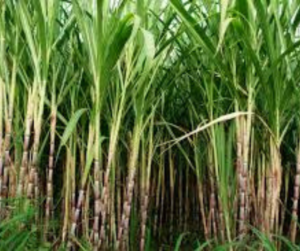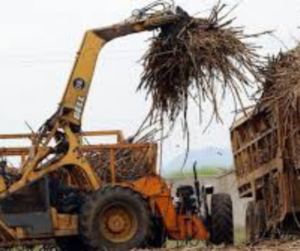
On the 20th day of January 2025, Kenya’s President Ruto gave a bonus to Mumias factory sugarcane farmers but not to the factory employees. A common understanding of a bonus is a sum of money added to a person’s wages as a reward for good performance. It is the extra payment, or financial component received as a reward for doing one’s job well. I remember earning a bonus at the university at the advent of the fee paying programmes that improved the financial status of my university when they lasted. The message I get from the Mumias bonus is that the farmers did a good job on their farms hence they, and not employees, deserved the bonus. This is despite the fact that the farmer’ representative who spoke at the function said many farmers had abandoned sugarcane farming. Well, there could be other definitions of bonus. As to whether or not sugarcane farmers in western Kenya are doing so well on their farms as to deserve a bonus I leave it for a story for another day.
Sugarcane is, for the western Kenya, a cash crop. A cash crop can be defined as farm output that is sold and not consumed at home. That way cash crops have the potential to bring substantial wage and employment opportunities to a rural economy.
If well managed, then over time, cash crops can provide a stimulus to agricultural innovation, by raising capital for agricultural investment.
The majority of sugarcane farmers in Kakamega and Bungoma and indeed other sugarcane growing areas are small scale and have to balance the benefits and risks of sugarcane and food crop production in their cropping decisions to sustain their livelihood and food security. As it is now western Kenya is food insecure i.e. it has unreliable supply and/or access to a sufficient quantity of affordable, nutritious food.
Pick up the list of the most important crops for food security in western Kenya and sugarcane will not be on that list. Food security crops in Kenya include rice, wheat, maize, millet, sorghum, roots and tubers such as potatoes, cassava, and arrow roots. Included are animal products such as meat, milk, eggs, cheese and fish. In western Kenya one would say there is an unfair bias for sugarcane production as compared to food crop production. Wait a minute maybe I am jumping the gun—food crop farmers might also get their bonus soon.
I vividly remember that many, if not all, western Kenya farmers who abandoned food crops to go to sugarcane farming considered the economics of sugarcane farming. In Bungoma, for example, maize farmers would harvest an average of 30 bags in an acre per year and sell the maize at Ksh. 4000 per bag to earn Ksh. 120 000 per year working out at a monthly income of Ksh 10 000. An acre of sugarcane promised a yield of 60 tons which when sold at Ksh. 5000 per ton would yield Ksh. 300 000 in 18 months or about Ksh. 17 000 per month. The extra Ksh. 7 000 made it, at face value, attractive to farm sugarcane.
In respect to rural agricultural development, the establishment of sugarcane schemes in Western Kenya over the years may be seen as a significant contribution to the attainment of self-sufficiency in sugar for domestic market and also improvement in rural per capita income. Nonetheless the issue of food security in these regions seems to have attracted inadequate intervention from the development stakeholders, including the government.
A number of sugarcane farmers have been attracted to the cash crop at the expense of their own food needs. Thus, a study by the university of Nairobi was undertaken in Muhoroni to understand the interplay between sugarcane farming and the situation of household food security. It revealed that the dominance of the contractual cane farming in the area affects household subsistence in the region. In some areas like Dede in Migori it was found that despite income from sugarcane, some households do experience food shortages.
In 2010 the KNBS revealed that Bungoma County was food insecure and recorded a poverty index of 52.9% compared to the National index of 46%, while the food poverty stood at 43%. And according to the 2021 Agricultural Policy, food insecurity in Bungoma stands at 33%, with 60% of households unable to access minimum diverse diets. Furthermore, stunting levels among children under five in the county stand at 12%, with wasting and underweight levels at 2% and 5% respectively (KDHS, 2022). With this food insecurity situation converting land to farm non-food crops can only add one more firewood in an already boiling pot.

Food insecurity aside. There are a number of negative impacts of sugarcane farming. Sugar mills produce wastewater, emissions and solid waste that impact the environment. The massive quantities of plant matter and sludge washed from mills decompose in freshwater bodies, absorbing all the available oxygen and leading to massive fish kills. The Mumias and Nzoia sugar factories in Kenya have, for example, polluted the River Nzoia with solid waste, effluents, and emissions, which has negatively impacted fishing in the river yet fish is a contributory to food security.
It has also been observed that cheap imported sugar to Kenya results in competition to the millers and this translates in delays in disbursing payments to farmers by the sugar companies.
In conclusion we can say that sugarcane farming is a key part of Western Kenya’s economy but it has also contributed to food insecurity. In my opinion households should be encouraged to produce enough food before growing sugarcane. If a direct bonus for food crop farmers is not possible then attractive pricing of the crops could be a good motivational strategy. Known to me are some small-scale farmers who after putting all their quarter or half acre land to sugarcane have ended up leasing it out as late as in the 15th month after planting to be able to get food or meet other ends (Sugarcane in my area takes up to 18 months to mature). This then brings to the fore the need for crop diversification training for sugarcane farmers. Through my tiktok I try to disseminate some crop farming diversification projects including integrated poultry farming.
